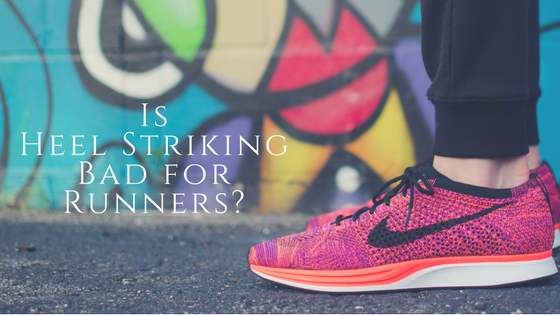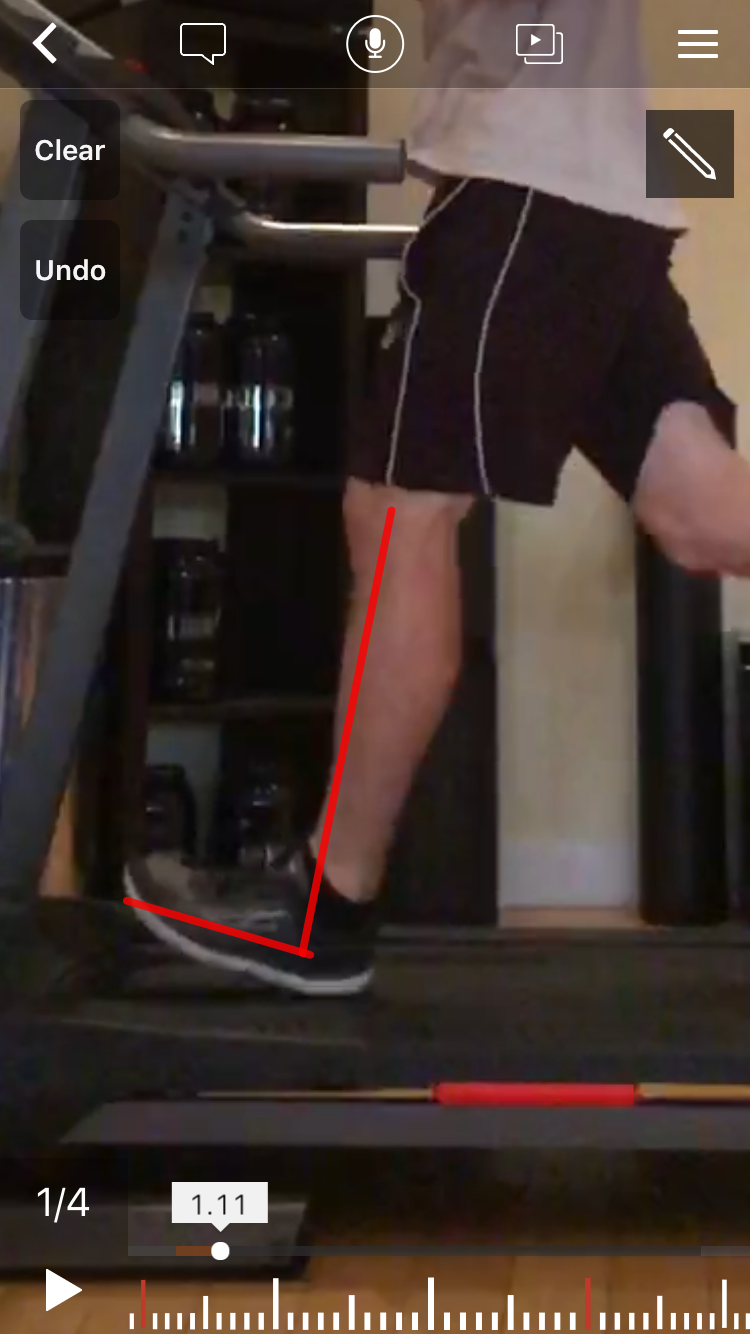
Correct foot strike pattern is a topic that creates a lot of confusion among runners. Heel striking is demonized by some but described as pretty much irrelevant by others. Did you know that there are different kind of heel striking patterns? If you are a heel striker, you’ll want to read on to decide which kind you are and what that means for your injury risk and running performance.
Heel Strike vs Midfoot Strike vs Forefoot Strike
First off, let’s just define what the terms we are using mean. We’re talking about which part of the foot hits the ground first as we run. This is called initial contact. So if your heel is the first part of your foot to touch the ground at the point of initial contact you have a heel strike running pattern. If the ball of your foot or forefoot is the first part of your foot to touch the ground at initial contact then you have a forefoot strike pattern. These two are really easy to see. Midfoot strike means that the midfoot touches the ground first at initial contact and it’s a little bit more difficult to see. The foot is pretty much flat and contacts the ground all at once.
Is Heel Striking Bad Running Technique?
Yes and No. We have to break the heel strike pattern down into two categories. Hard-heel and soft-heel. Then we can describe why hard-heel is bad and soft-heel is good. When we land with a hard-heel strike there is a jolt of impact that travels up the leg. To get a feel for this just take your shoes off and do some tiny hops but land on your heel. You will feel that jolt of impact. That’s a problem because high impact is related to increased running injuries. Now, do some little hops and just land naturally. You will notice that you land on your forefoot and there is no jolt of impact.
So, it’s not the heel strike pattern that is bad per se, rather it’s that jolt of impact. Some runners land on their heel and will experience that jolt of impact. I call that pattern the hard-heel strike pattern. Other runners will land on their heel more gently and not experience that jolt of impact, I call that pattern the soft-heel strike pattern.
Hard-Heel vs Soft-Heel
The difference between a hard-heel strike and a soft-heel strike is quite subtle and it is all about impact. When the impact is low, you will land quietly. During a hard-heel strike the heel contacts the floor and the force is transmitted straight up the shin and into the knee. The foot is pretty much taken out of the equation. This results in a hard impact and noisy landing, hence the term “hard-heel”.
With a soft-heel strike the heel does contact the ground first but you quickly bring the foot down into contact with the ground. In this scenario you can use the foot and calf muscles to absorb some of the impact. This results in a softer impact and quieter landing, hence the term “soft-heel”.
One easy way to tell whether you are landing with a hard-heel or soft-heel strike is to run on a treadmill and see how much noise you make. If you and landing on your heel and making a lot of noise you are a hard-heel striker. If you land on your heel but don’t make a lot of noise you are a soft-heel striker.
Overstriding
The above method to determine if you are a hard-heel or soft-heel striker is very simple and easy to do. This next method is a little more complicated but will help you further understand the negative aspects of hard-heel striking. You’ll have to take a video of yourself running from the side view. You can do this easily using the Hudl App on your phone.
I have discussed previously the negative effects of over striding on running performance. So I’d recommend you read that article to get a better sense of why we want to avoid over striding. Just quickly though, over striding is landing with your foot too far out in front of your centre of mass. This results in a braking force that will reduce your running economy. Over striding is essentially like driving with the parking brake on.
The hard-heel strike pattern is almost always associated with an over striding pattern. However, the soft-heel strike pattern is rarely associated with an over striding pattern. When you land with a hard-heel strike your heel contacts the ground with your toes angled up toward the sky. This means that the shin bone (tibia) is angled backwards. This is a really good indication that you are landing your foot far out in front of your centre of mass and over striding.

When you land with a soft heel your heel contacts the ground first but you quickly bring the mid and forefoot down to help absorb some of the impact. As you do this the toe will be pointed more forwards and less up to the sky. That means at the point of initial contact your shin bone will also be vertical and not angled backwards. This is a really good indication that you are landing your foot close to underneath your centre of mass and not over striding.
In Summary
Heel striking is not bad for runners if it is a soft-heel strike. That means the runner lands gently on their heel with their foot close to their centre of mass. Heel striking is bad for runners if it is a hard-heel strike. That means the runner lands hard on their heel with the foot out too far in front of the centre of mass.
Have a go at the two methods above. Are you a hard-heel striker or a soft-heel striker? Let us know in the comments.
Check out our Facebook Live video!
